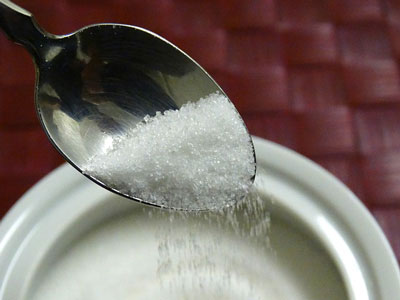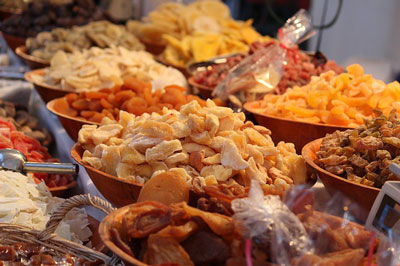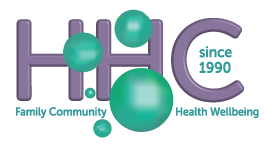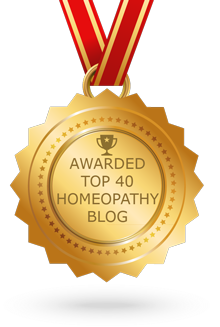 You don’t need to be eating lollies, cakes, biscuits, slices, muffins, ice cream, and chocolates, or drinking soft drinks to be consuming too much sugar; there are many types of sugar in many types of foods. Most people are suprised by the amount of sugar that is in what are considered ‘healthy’ or ‘natural’ foods.
You don’t need to be eating lollies, cakes, biscuits, slices, muffins, ice cream, and chocolates, or drinking soft drinks to be consuming too much sugar; there are many types of sugar in many types of foods. Most people are suprised by the amount of sugar that is in what are considered ‘healthy’ or ‘natural’ foods.
Health conscious people are attracted to labeling that says ‘natural’, ‘organic’, ‘low fat’ ‘no added-sugar’ but sometimes these food products can have just as much sugar as their processed equivalents. I was always reading labels, checking for additives like artificial colours, flavours, preservatives, nasty fats and oils. I now know that while these things should be avoided it is really important to check the sugar content and avoid the sugar.
If you haven’t seen ‘That Sugar Film’ by Damon Gameau http://thatsugarfilm.com, then see it as soon as you can! It is a life changing, educating, funny and entertaining film that illustrates the health risks and destructive nature of eating too much sugar, and how it is SO easy to do this unknowingly by eating ’healthy’, ‘natural’, ‘low fat’ foods.
So How Much is Too Much??
The World Health Organization (WHO) recommends that for optimal health we should restrict our added ‘free sugar’ intake to just 25 grams (6 teaspoons) a day. Some health professionals believe less is better. ‘Free Sugars’ are those sugars that are removed from their original source and ADDED to foods usually as a sweetener or as a preservative for longer shelf life. There are estimated to now be at least 60 different names for these ‘free sugars’ as you can see here
Read The Label!!
It is really important to check the ingredients list and look out for any sugars listed above. If you are like me you will need your glasses (or a magnifying glass!) to read in very small type, of the list of ingredients and nutritional information. Often SUGAR will be on the list but companies are getting cheeky now and are using these other names like ‘evaporated cane juice’ or ‘organic palm sugar’ as a disguise and to avoid the word SUGAR. These are still an added ‘free sugar’ and usually contain fructose as a sweetener. Many of the sugars on the above list contain the molecule FRUCTOSE. Fructose is what makes foods sweet. It is one half of table sugar and it’s why most of us have a sweet tooth.
Learning to read food labels will really help you to reduce your sugar intake. For example, say you look at the nutrition table on a food label and it states SUGARS 20 g. You can calculate the number of teaspoons in that food by dividing this number by 4 (grams contained in a teaspoon). Therefore there are 5 teaspoons of sugar in the product. But you need to check how much is in each serving AND whether the size of the serving is the same as the size of the serving you are having. On a juice label it may tell you there are 20g of sugar per 200mls (5 teaspoons of sugar). But what if you are having a tall 400ml glass!! That would be 10 teaspoons of sugar! Don’t be swayed by juice labels that boast ‘No Added Sugar’. Because with 10 teaspoons per glass, there’s enough sugar in it already!
In Australia, companies do not have to be specific about what type of Sugar is in the food. For example, yoghurt may contain lactose plus sucrose but the label will just say ‘sugars’. Sucrose vs Fructose Sugar is sucrose, which is 50 per cent glucose and 50 per cent fructose. When sugar enters our body and enters the small intestine it is split by an enzyme into fructose and glucose. The fructose and glucose molecules are absorbed into the bloodstream and head towards the liver. On the way, the glucose is used for energy by any cell that needs it, including the liver. The liver stores excess glucose as glycogen to be used later.
The fructose, however, needs to be processed by the liver before it can be used for energy. The liver responds in a different way to fructose and pulls it out of the blood and absorbs it whether it needs it or not, whenever it is available. The fructose immediately gets turned into fat. This is what happens when we eat too much sugar – we store it as fat. Fructose turning to fat in the liver causes fatty liver disease and can set off a series of unhealthy chain reactions in the rest of the body.
Added vs Natural Sugars
SUGARS naturally occurring in fruits, vegetables and dairy are OKAY but SUGARS removed from their original source and ADDED to foods, we need to be wary of. Fructose is found in fruit (and a small amount in vegetables) but there is a big difference when we eat it in fruit because it is encased in fibre, which hugely affects its metabolism in our bodies. The fibre helps to slow down the absorption and so it doesn’t get fast, direct access to the liver like it does when it is ‘free’. When it is able to access the liver very quickly, there is no regulation process for it so it rapidly gets turned into fat. This process is greatly affected and halted when the fructose is absorbed with the fibre of the fruit.
Dried Fruit
We can often get a very high level of concentrated sugar in dried fruits. On ‘That Sugar Film “ website, Damon describes an experiment he did that didn’t make the cut that shows this very clearly. He counted out a box of sultanas and discovered there are around 90 in a box. He then tried to eat 90 grapes (what a sultana is with the water) and only got to about 25 before the fibre/water combination told my body that I was full. It didn’t allow me to access all that sugar. But once we remove the water, the structure changes and we can get a huge hit of concentrated sugar straight to our system. As we are now discovering, we simply aren’t designed to deal with that load.
- Vitamin D – “The Sunshine Vitamin” - 29/06/2022
- 20 Tips to Control Your Sugar Cravings - 06/10/2021
- Knock out that cold or flu and fast track your way back to health! - 15/06/2021




Leave a Reply